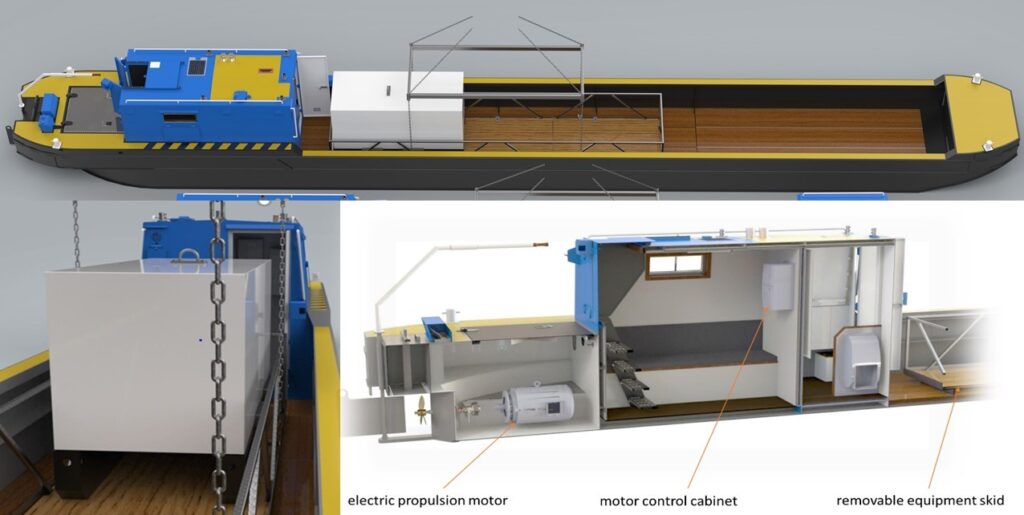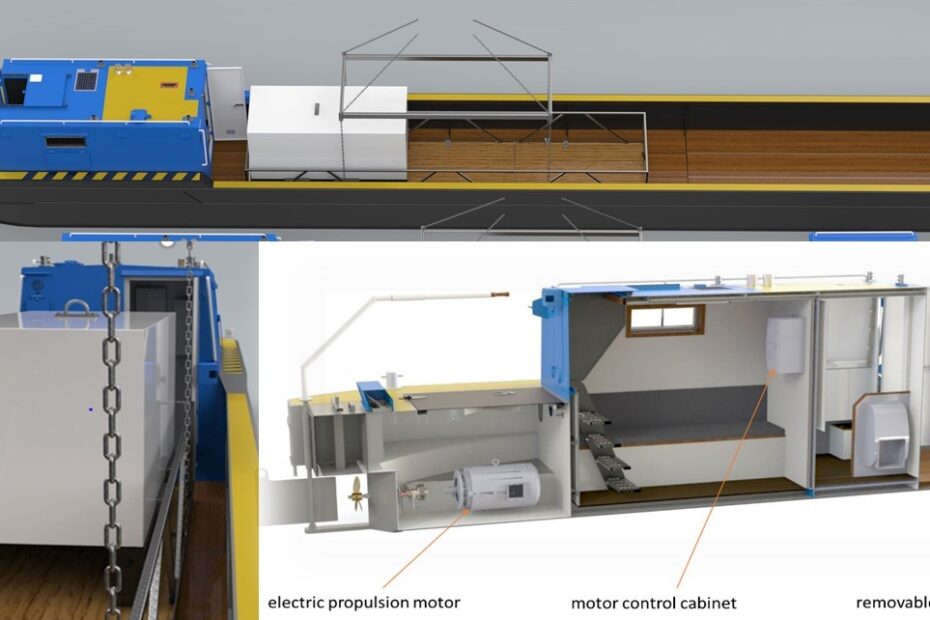Journal of Open ENLoCC, the European Network of Logistics Competence Centers
Issue 2020-1, Article 01
Editor’s note: The idea of oxyfuel combustion is to run motors not on air but on pure oxygen. This technology is in its test phase and has the potential to reduce CO2 and NOx emissions significantly. Open ENLoCC member Circoé in Le Havre is part of the RIVER project consortium.
Objective
One goal of the RIVER-project is to install and test the RIVER-Technology, namely the Oxyfuel combustion and Carbon Capture & Storage (CCS) system on a ship operating in real environmental conditions. Therefore, a narrowboat operating on UK’s inland waterways was chosen.
The tests serve the assessment of any failure of components and the calibration of the developed control strategy for the gas mixture and the cooling system. The overall power requirement under service conditions and fuel consumptions is in focus of attention as well. The demonstrator will have a Technical Readiness Level (TRL) of 5.
Two project partners are mainly responsible for this task, namely Canal & River Trust (CRT) and the Development Centre for Ship Technology and Transport Systems (DST). While CRT is designing, constructing and operating the narrowboat, DST is developing an integration concept of the RIVER-Technology (in collaboration with CRT) and performs the required hydrostatic and stability calculations for the vessel. The additional developed components required for the Oxyfuel combustion, exhaust treatment and CO2 storage are designed by the partners Yncréa, University of Bedfordshire, Cleancarb and ECE.
Narrowboat and Integration Concept
A principle sketch of the narrowboat is shown in the Figure 1. The overall length of the newly built vessel is 18.95 m and the ships breadth is 2.14 m. The room arrangement of a common 130 Class F vessel is illustrated in Figure 2. In longitudinal direction and starting from the aft, the vessel is divided into the engine bay, day cabin, toilet & wash room, cargo hold and tool cabin.

To run the oxyfuel system with 7.5 l gasoil, the following requirements have been identified beforehand:
- Space requirement: max. height 1.8, max width 1.0 m
- Loading capacity: about 4 tons
- Hydrostatic stability: GM 0.35 m
In common, a diesel engine with a gearbox driven propeller is used to operate the vessel. Due to space limitations a diesel-electric powertrain concept was elaborated by CRT and DST that allows to decouple the diesel engine from the electric drive engine. A self-contained diesel-generator set is equipped with the additional components for the oxyfuel combustion and is able to provide the electrical power required for the project equipment and to power the electric 3 phase transmission motor connected to the propeller. Further, a frequency converter and a motor control device are required.

Development Centre for Ship Technology and Transport Systems e. V. (DST)
DST is a research institute and tank test facility with more than 65 years of experience in Research & Development (R&D) in the field of inland waterway transportation (IWT) and coastal shipping. It is also a partner institute of the University of Duisburg-Essen in Germany.
The main contribution of DST in the RIVER-project is the integration of the newly developed oxyfuel combustion and CCS system into a small inland waterway vessel. For the ship, suitable basic system configurations were investigated and compared with a common diesel engine approach in terms of required tank capacities (additional weights and volumes), fuel consumptions and mechanical power distribution.
Jens Ley, Department Design and Simulation of Ships and Offshore-Structures,
Development Centre for Ship Technology and Transport Systems e. V.
Oststraße 77, 47057 Duisburg, Germany
